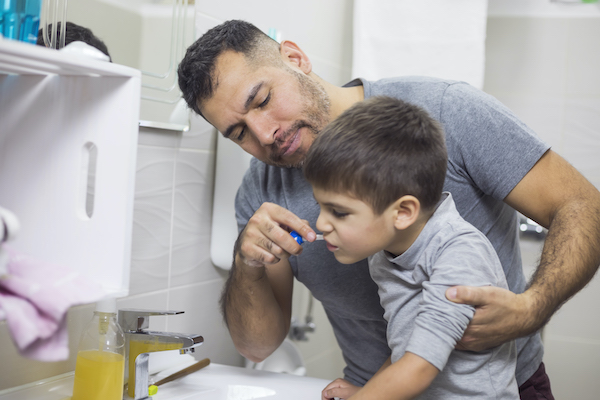 Home visiting is a service provided by a wide range of staff, including family service workers, health managers, teachers, and teacher aids, within the home to pregnant women and parents of children from birth to age 5. During home visits, pregnant women and parents learn important information to keep themselves and their child healthy and safe and to support child-parent relationships.
Home visiting is a service provided by a wide range of staff, including family service workers, health managers, teachers, and teacher aids, within the home to pregnant women and parents of children from birth to age 5. During home visits, pregnant women and parents learn important information to keep themselves and their child healthy and safe and to support child-parent relationships.
Common oral health issues discussed during home visits can include good oral hygiene practices, healthy food choices, strategies for preventing tooth decay, and the importance of regular dental visits.
This Brush Up on Oral Health tip sheet discusses why promoting oral health during home visits is important. It also provides tips Head Start staff can use to promote oral health during home visits.
Discussing Oral Health During Home Visits Is Important
Sharing information about oral health with parents and pregnant women shows them that a healthy mouth is important. For people of childbearing age, good oral health is important to a healthy pregnancy. Hormone changes during pregnancy can contribute to sore, puffy, and bleeding gums. Also known as pregnancy gingivitis, this condition can affect a person’s ability to eat healthy foods, including fresh fruits and vegetables. This can negatively impact their health as well as the health of their baby.
Information on children’s oral health can be shared during home visits as well. A child whose teeth are brushed twice a day with fluoride toothpaste, who is fed healthy foods during regularly scheduled meals and snacks, and who is taken for dental visits is more likely to stay healthy, too. Children with healthy mouths are more likely to be free from pain and infection, eat healthy foods, and learn better.
Home visits are ideal for sharing ways to promote good oral health. The home visitor can learn what the family knows about oral health. It is also important to find out how parents care for their child’s teeth and how the pregnant woman cares for their teeth. This helps the home visitor give each family information that meets the family’s needs.
Tips for Covering Oral Health During Home Visits

- Build comfort and trust. Use simple questions to introduce oral health that the parents or pregnant women can answer in their own words (avoid yes or no questions). Be supportive and encourage good health behaviors. Learn how health decisions are made, and find out what motivates the parents or pregnant women to change behavior.
- Tailor education. Ask the parents or pregnant women what oral health information would be useful to know and what information is confusing. Make sure the oral health message meets the family’s needs. Ask permission before offering suggestions. Use visuals and hands-on activities to reinforce messages. Provide educational materials such as Healthy Habits for Happy Smiles handouts to reinforce education efforts.
- Help set goals. Help set one or two realistic goals and develop simple strategies to increase the family’s chances of success. Praise the goals and strategies. Be sensitive to why the parents or pregnant women may resist setting goals. Respect the family’s decisions.
- Follow up. At future home visits, check the family’s progress toward meeting goals. Offer encouragement and support. Review key messages and show home oral-health-care techniques, if needed. Work as a team to find ways to solve any problems.
Home visitors can benefit from training on motivational interviewing and other strategies for helping pregnant women and parents improve their oral health. Training and resources are available at the Home-Based Option page. The Association of State and Territorial Dental Directors’ Oral Health Educational Resources for Home Visitors and Families: Environmental Scan lists curricula, audiovisual materials, and other resources that can be used by home visitors to promote oral health.
Read more:
Resource Type: Article
National Centers: Health, Behavioral Health, and Safety
Audience: Teachers and Caregivers
Series: Brush Up on Oral Health (BUOH)
Last Updated: January 31, 2025
